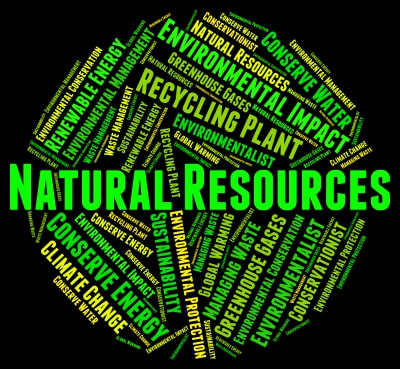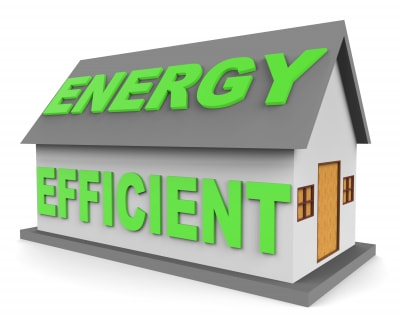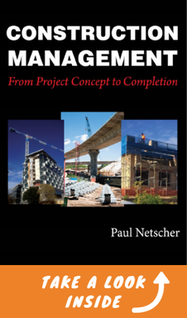|
Commercial buildings account for a large percentage of the overall carbon emissions in the world. Due to this alarming statistic, building or retrofitting structures in line with green initiatives and transitioning to a sustainable building method are logical solutions to reduce C02 emissions. "The purpose of green buildings is to reduce the occupants' reliance on artificial devices and maximize the use of the natural resources surrounding the structure." The purpose of green buildings is to reduce the occupants' reliance on artificial devices and maximize the use of the natural resources surrounding the structure. If you are interested in creating or renovating your existing building to become more sustainable, here are some vital considerations for green building design. Steps to making your building green1. Orientation of the Building Building orientation is the process of facing a structure in a certain way to maximize various aspects of its surroundings, such as the warmth of the sun, curb appeal, wind patterns, and drainage system. With rising energy costs, it is an effective passive technique to capitalize on natural energy while maintaining thermal comfort. Below are some tips to maximize natural heat gain through orientation:
For instances where kerb appeal and lot dimensions hinder your builder's ability to orient your space, you can still achieve efficiency by employing energy-saving features, insulation, and cool roofs. 2. Solar Shading Solar shading and control directly impact the efficiency of your commercial building. Also called daylighting, solar shading involves using specific technologies to combat glare and reduce heat gain without preventing natural light. The process reduces your reliance on artificial lighting and HVAC systems. In a nutshell, solar shading eliminates direct heat and sunlight to help keep a space cool and efficient. Here are the two types of solar shading to help you decide which method is best for your building:
In addition, by reducing heat gain, solar shades can help reduce the need for air conditioning systems. When used in conjunction with other passive methods such as night cooling, it also has the potential to eliminate your need for HVAC devices, depending on your location. 3. Choice of Building Material Choosing sustainable materials is also a practical option for green buildings. Material selection during construction is crucial to determine your building's impact on the environment. For instance, it would be best to choose locally sourced sustainable materials as it can also help minimize transportation costs and help the community. Here are some examples of recycled building materials:
Recycled materials can also help reduce landfills and the need for non-biodegradable products. A perfect example of recyclability is metal roofs since they primarily consist of recycled metal sheets. You can also choose a lighter roofing shade for your commercial roof to lower heat gain and install energy-efficient flat-panel skylights for natural illumination. 4. Building Envelope The building envelope is also a critical component in your commercial space as it divides the interior and exterior parts. The primary functions of building envelopes include security, shelter, solar and thermal control, moisture control, indoor air quality, and daylight access, to name a few. The builder can also build the envelope differently depending on the location. For instance, a loose envelope allows airflow throughout the building. Meanwhile, a tight envelope controls the in and out airflow of the structure. 5. Window-wall Ratio (WWR) The window-wall ratio is a crucial energy-saving design that can affect your building's energy consumption. The WWR refers to the portion of an exterior wall that consists of windows and is a significant value in determining a structure's energy performance. Since windows can cause twice the energy loss compared to a wall, they can impact your existing HVAC system. Therefore, the size and number of your windows should depend on the climatic conditions in your area. Aside from shading, you can purchase windows with superior glazing systems and lower heat gain to reduce heat and glare. 6. Structural Design The commercial building and construction industry is accountable for the largest raw materials consumed in various applications. Combined with the continuing growth of the population, it is necessary to find alternatives and solutions to reduce resource depletion. Here are some of the ways of material efficiency:
Proper management and usage of construction materials is a significant concern in every building project. It is crucial to employ effective techniques to ensure material efficiency and resource conservation. 7. Smart Lighting Lighting accounts for up to 20% of a building's total energy usage worldwide. Proper and adequate lighting affects occupant health, comfort, and productivity, so you need to implement efficient lighting solutions for your building. The best way to establish sustainability in your business is to allow as much natural light as possible. Daylighting helps reduce lighting costs, but it is also beneficial to your employees. If natural illumination is not enough, you can use CFL or LED lights to minimize consumption and heat pollution. 8. Water Conservation Water regulation and quality are some of the fundamental objectives of a green building. Please pay close attention to your plumbing system since it primarily deals with water distribution and disposal. Start by regularly maintaining the pipes and installing water-conserving fixtures to reduce water loss. You can also practice rainwater collection and use it for toilets and landscaping. Install an efficient drainage system and harvesting canisters to practice recycling water. 9. Energy Usage Although fossil fuels paved the way for generating electricity in homes and factories in the past, they are responsible for global warming due to the trapped heat. Thankfully, we have found alternative power sources such as solar heaters, solar panels, natural ventilation, and daylighting. By implementing an intelligent approach toward energy consumption, we can hopefully eliminate the need for fossil fuels. "reduce, reuse, and recycle" 10. Waste Management Responsible waste management involves strategically placing waste disposal boxes and garbage chutes. You can help reduce landfill waste by strictly implementing reduce, reuse, and recycle practices inside your commercial building. To achieve this, you need proper planning to dedicate certain areas inside the facility for waste management. Segregate waste and employ effective wastewater collection systems that will go hand in hand with your plumbing lines. Good green building design will save moneyGreen buildings are the key to reducing the energy and emissions rate of the construction industry. The term refers to the zero-impact construction of commercial and residential structures, which involves using sustainable materials and improved efficiency. Ultimately, the application of efficient practices is highly beneficial for your business. You stand to gain reduced operational and power costs, shorter investment returns, and increased asset value as more people choose to become sustainable. Creating healthy spaces for your employees or occupants is undeniably crucial to the success of your commercial structure. AuthorChris Jackson is an experienced Business Development Manager with a demonstrated history of working in the construction industry. He is currently employed by Best Access Doors, an access door supplier in the US and Canada, and has been working for the company for more than 12 years now. His area of expertise is on Negotiation, Roofers, Sales, Project Estimation, and Facility Management (FM)
construction management construction project management
6 Comments
26/9/2022 05:52:13 pm
It helped when you mentioned that strategically placing waste disposal boxes and garbage chutes are all part of responsible waste management. My friend wants their wastewater design to be green. I should advise him to look for a contractor that can execute their desired features.
Reply
8/6/2023 07:52:15 am
Your blogs are really amazing. I really like your content. Thank you for sharing your ideas with us.
Reply
13/11/2023 02:11:24 pm
Amazing article! Are there specific certifications or standards to look for when evaluating the sustainability of a building design?
Reply
5/2/2024 08:07:22 pm
What are the challenges and opportunities associated with implementing green building practices in urban environments?
Reply
1/4/2024 01:05:01 pm
I'm so impressed by the depth of information in your article - it's clear that sustainable design is the way forward!
Reply
Leave a Reply. |
Archives
June 2024
Note: We welcome genuine comments, especially comments that add additional information to the subject matter in the article. We however reserve the right to remove inappropriate comments, which includes comments that have nothing to do with the subject, comments that include inappropriate language, and comments that are an advertisement for a product or company, or which include an advertising link. Comments must be in English. We will not enter into discussion on why a particular comment was removed.
CategoriesCopyright 2016 - The attached articles cannot be reproduced for commercial purposes without the consent of the author.
The opinions expressed in the attached articles are those of the writer. It should be noted that projects are varied and different laws and restrictions apply which depend on the location of the contractor and the project. It's important that the reader uses the supplied information taking cognisance of their particular circumstances. The writer assumes no responsibility or liability for any loss of any kind arising from the reader using the information or advice contained herein. "I have what I consider some of the best books on construction management."
Books are available from: Amazon.com Amazon.co.uk takealot.com kalahari.com Amazon.in Amazon.de Amazon.fr Amazon.it Amazon.com.au Powell's Fishpond uread bokus Amazon.ca Amazon.es Other retail stores Available in paperback or on Kindle "28 YEARS OF CONSTRUCTION PROJECT MANAGEMENT EXPERIENCE, DEVELOPING SUCCESSFUL CONSTRUCTION PROJECT MANAGERS AND BUILDING SUCCESSFUL CONSTRUCTION COMPANIES"
|








 RSS Feed
RSS Feed




